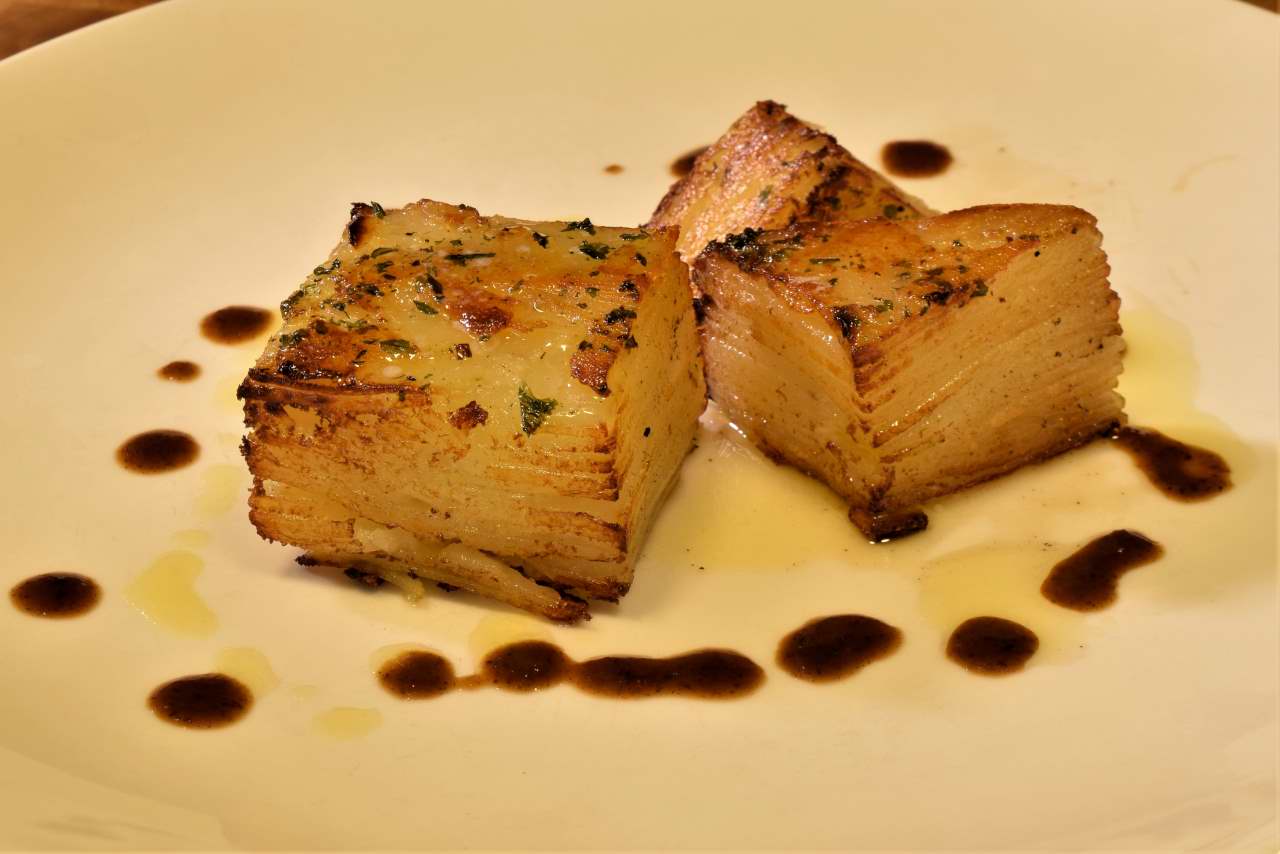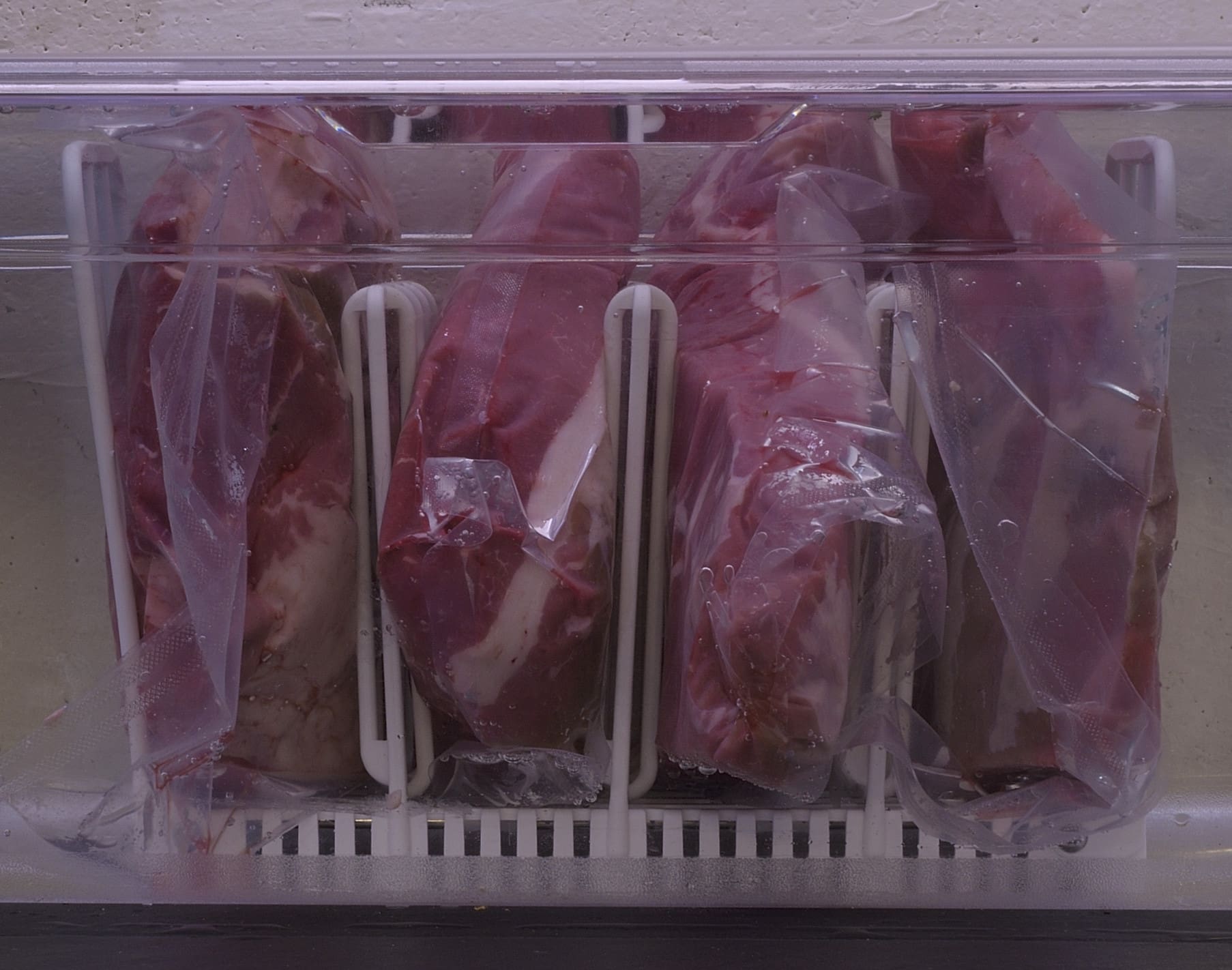Procedure:
After sealing the cured beef in either vacuum bags or Ziploc Freezer bags using the DISPLACEMENT method, process sous vide @ 135F/57Cx72 hours.
This may seem like an inordinately long time, but this hard working muscle is one of the toughest on the entire animal, save the actual shanks. Make sure that the package is FULLY submerged for the entire duration of the processing, for purposes of quality and safety.
Once the duration is elapsed, remove the meat from the bath. Cold shock in tap water until a thermometer reads 70F/21C for 5 minutes AFTER you stop adding water. Use ice, if available–the water must maintain that temperature for 5 minutes after the ice melts.This usually takes about a half an hour. It is very important, not only for the corned beef itself, but for its neighbors in the refrigerator. Temperature in the refrigerator could be elevated to an unsafe level due to presence of the warm package.Refrigerate to 40F/4C.
In this state, the corned beef is pasteurized and will keep refrigerated for at least a week. Proper temperature must be maintained in the refrigerator, and the seal must not be broken.On the day that you plan to smoke the corned beef, remove the package from the refrigerator. Remove the meat from the package, and save the JUICES.
Cut the steaks
Cut thick slices from the corned beef, against the grain whenever possible. The thickness is not as important as the fact that they are all uniform in thickness, and weights will vary.
Lay the steaks on butcher paper and sprinkle lightly with flour. Make sure the surfaces are all dry, but try also to not have a lot of flour left over on the sheet. This makes it easier to coat the pieces with the egg white, after which they should all be moist to the touch. This will cause the rub to stick to the surface, even during cooking. There should be very little egg white left over on the sheet. If there is, you may consider changing the sheet to avoid excess clumping.
Sprinkle the steaks heavily with the rub–there is no salt in it because the meat is already cured. The steaks will cling to a lot of the rub so make sure they are completely covered. Allow to rest for 15 minutes.
Arrange the steaks on a screen, or load into Lipavi racks upright. Toss the mushrooms with the lemon juice, sprinkle with S+P and then add a few drops of oil. Arrange the mushrooms on the rack in the empty spaces.
I processed this in a pellet grill @
250F/121Cx2.5 hours
Next: Asparagus
While the corned beef is smoking, process the asparagus. I used what is called a “Swiss Peeler” to remove the tough skin. This is a very useful tool in the kitchen. Every cook should have one in his bag, but most don’t. They do a lot more than peel potatoes and carrots. Sharp ones can even be used to peel tomatoes and peaches. Simply hold the tip gently with one hand and peel from the tip to the stem end in long, easy strokes.
Seal in single layers, and process sous vide @
183F/84Cx ten minutes.
Cold shock immediately to prevent discoloration of the asparagus. Green vegetables can be processed sous vide, but emit gasses that tend to discolor them. Care must be taken to avoid exposure to long periods of time in an oxygen free environment at temperatures above 70F/21C.
When the meat and the mushrooms come out of the smoker allow to cool somewhat. Cut into one of the steaks, and it should look like this:
You can see how well the spices have clung to the meat. Many people try to use a mustard slurry to achieve this effect, but the egg whites are healthy, neutral in flavor, and form an extremely tight and dry bond between the herbs and the meat. Even after roasting, a mustard surface remains moist. It will come right off if touched with a towel or implement. It can also burn your lip, because of its pasty texture.
Service:
This is a fun dish to serve. It combines the rustic, sporting feeling that goes along with cooking outdoors, with an extremely complex and unique combination of flavors. It can be served many ways–this is how we served it recently:

If you heat your plates to about 170F/78C, you can use them to heat the asparagus. There is no shame in carefully using a microwave oven to do this either. The Mille-Feuille make for an excellent companion on the plate, along with some mustard, licorice root gastrique, even a spritz of barbecue sauce and Buerre Monte go extremely well. Even ketchup. That’s right. There is no shame in ketchup!
This dish is sure to excite the calmest back yard crowd. Leftovers make the most amazing sandwiches, either hot or cold. I don’t like that word “leftovers.” In reality, Everything is a leftover. The only difference is that some food is preserved properly and some is not. If you prepare and store your food safely, it will be eaten long before it has a chance to become a degraded “leftover.”






